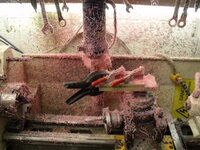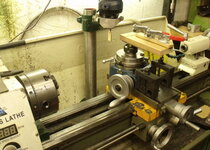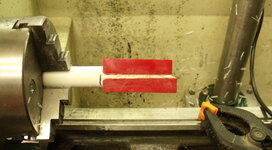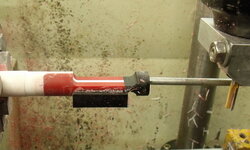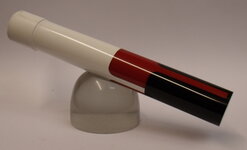Here's a technique I've wanted to try for some time. The end result may not seem to warrant the set up but I think it has some promise.
The first few pics show how I made the segments with rounded over corners that would match the cutouts.
I made a simple jig that is mounted in my rotary table. This makes the rounded corners.
Mounting the router in the QCTP with the blank indexed in the chuck was how the inlays were cut.
I'm glad it worked out. Now just to develope the idea to make a nicer blank.
:biggrin:
Oh.....here's a question......
Why is it that instead of taking five minutes to rig up the vacuum cleaner while routering, we just wait till the job is done and then spend a whole hour cleaning the entire workshop of the router waste that gets EVERYWHERE !!!

The first few pics show how I made the segments with rounded over corners that would match the cutouts.
I made a simple jig that is mounted in my rotary table. This makes the rounded corners.
Mounting the router in the QCTP with the blank indexed in the chuck was how the inlays were cut.
I'm glad it worked out. Now just to develope the idea to make a nicer blank.
:biggrin:
Oh.....here's a question......
Why is it that instead of taking five minutes to rig up the vacuum cleaner while routering, we just wait till the job is done and then spend a whole hour cleaning the entire workshop of the router waste that gets EVERYWHERE !!!

